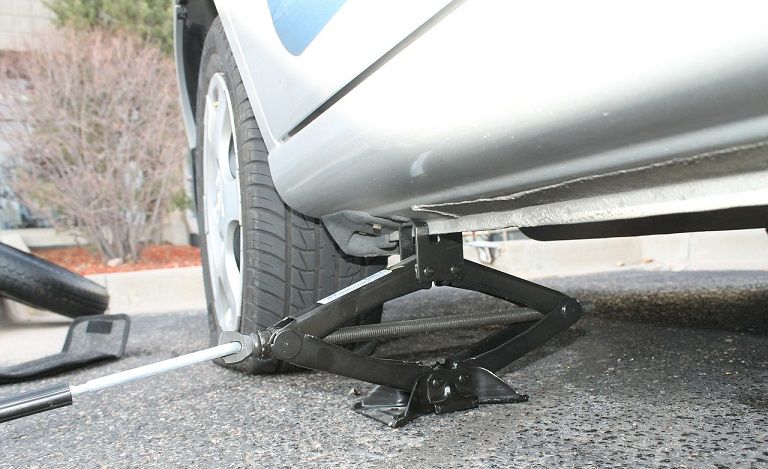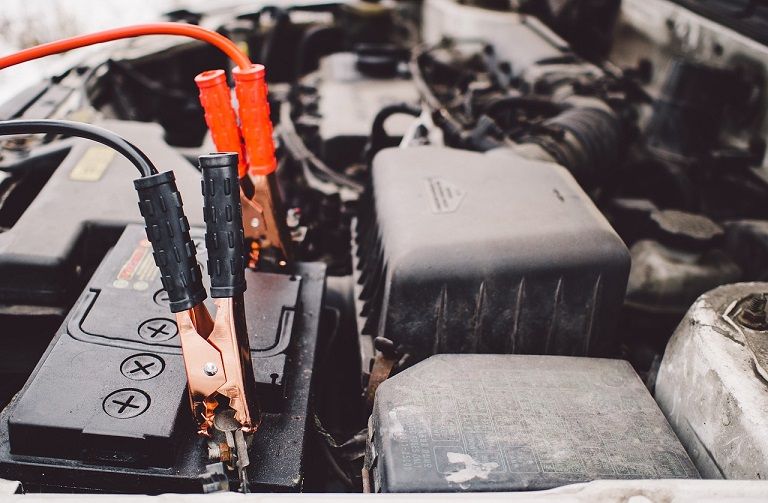How-to
How To Make A Log Splitter With A Hydraulic Jack In 6 Steps
A log splitter is handy when it comes to splitting logs because of its much higher efficiency compared to an axe. With the advance of technology, many manufacturers have released hydraulic-piston based log splitter into the market. The new mechanism allows you to quickly finish a cord of wood on your own in a couple of hours.
Yet the price tag of such product is not always a good match to your wallet. In that case, this article shall show you how to make a log splitter with a hydraulic jack. It’s not difficult and you can produce a hydraulic log splitter for your own use with little expense as well.
Necessary material and gear for the task
You won’t need sophisticated stuff here, most required items can be found around the house or the local hardware store. Generally, you have to fabricate a frame, a sliding block and a wedge then combine them to a pedal operated bottle jack. Junk metal and salvaged parts are excellent choice to cut down cost yet do remember to exam their quality beforehand.
Eventually, you have to joint everything together by welding so grab an acetylene torch and a welding mask if possible. Otherwise, protect your eyes with a pair goggles while you are making the log splitter and using it too.
When you have all the things you need then it’s time to get to work for real.
-
Step 1: Assemble the main frame
In this step, you will build the L shaped frame of the log splitter and its associated support base. The height of the frame largely depends on the size of log you intend to use the machine for. Ideally, the log splitter top should be right around your abdomen so you can operate it in an easy manner.
For the base, the style to use here relies on the kind of part you have so do whatever you like. As long as it keeps the frame stable and less susceptible to vibration then the base is good. The recommendation style is an L shape base at the machine front and a rectangular shaped base at its rear.
-
Step 2: Make the sliding block
The purpose of the sliding block is to push the log into the log splitter wedge which split it open. The bottle jack will push and guide the block along the frame of the log splitter. Your job is to create a suitable shape for the sliding block to let the log sit on comfortably.
To obtain a good fit and smooth movement, you can make additional shims and slide them into the machine. You might have to do some grinding if the frame got a layer of paint to achieve the desired result. If the sliding motion is up to your taste then move on to the next step.
-
Step 3: Set up the bottle jack
As stated above, the bottle jack is the driving force of the sliding block and it’s located right beneath it. To keep the pedal from wobbling sideways, you have to guide it. A bungee cord is helpful to let the pedestal return to the upper position without your input.
Besides that, there is little else to do except to get the bottle jack nicely in position and secure it.
-
Step 4: Create the wedge
The wedge of the log splitter must have a sharp edge and a strong structural integrity. You can utilize an axe head as a substitute or manufacture a wedge of your design from a metal plate. A bit of welding and cutting is more than enough to properly attach the wedge to the machine.
Now the log splitter is mostly complete, you can actually use it right away yet there is still something left to be done. Prolong usage could bend the frame as time went by so it worth the effort to reinforce it a bit.
-
Step 5: Strengthening
Make another L shaped shame based on what you have done and weld it to the log splitter rear. Next, wield uniform length metal plates to the sides of frames hence reinforce the machine strength. Finally, the log splitter is completely ready to deal with every log you want to split efficiently and effortlessly.
-
Step 6: Finish
The log splitter is 100% operational now, it’s time to see the machine in action and perform adjustments if needed. Start with small size logs first then move to bigger ones while keeping an eye on the splitting motion. If everything goes smoothly then you start using the machine for regular splitting tasks.
Again, it’s vital to exercise caution whenever you put the log splitter to use, a lot thing can happen if you are careless. Splitting logs shall result in possible splinters and dusts that are quite harmful to your well being if you don’t have protective gears. If you spot any signs of damages on either the jack or the frame, it’s best to temporarily stop using the log splitter.
-
Bottle jack advice
It’s good to know that using a high capacity bottle jack for your log splitter is not always beneficial. Unless you are able to gather and put together sizable sections of steel for the frame, six-ton is the advised capacity. Go for something higher and the jack might bend the frame very quickly, render it completely useless.
Of course, you can always step up the strengthening to accommodate heavy jack but that is a lot of work. The overall cost could climb to a point which defeats the purpose of making a log splitter with little expense.
Conclusion
And those are most of the main points of how to make a log splitter with a hydraulic jack, quite easy to follow, right? It’s definitely not a walk in the park but if you are willing to invest your times and effort, you can do it. Strictly follow the instruction above and at the end of the day, you will have an efficient log splitter at your disposal.
Notice: Trying to access array offset on value of type bool in /home/garagean/public_html/wp-content/themes/jannah/framework/classes/class-tielabs-filters.php on line 320
Notice: Trying to access array offset on value of type bool in /home/garagean/public_html/wp-content/themes/jannah/framework/classes/class-tielabs-filters.php on line 320
Notice: Trying to access array offset on value of type bool in /home/garagean/public_html/wp-content/themes/jannah/framework/functions/media-functions.php on line 72
Notice: Trying to access array offset on value of type bool in /home/garagean/public_html/wp-content/themes/jannah/framework/classes/class-tielabs-filters.php on line 320
Notice: Trying to access array offset on value of type bool in /home/garagean/public_html/wp-content/themes/jannah/framework/functions/media-functions.php on line 72



